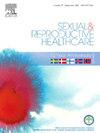亲密伴侣暴力与妇女性健康和生殖健康结果:澳大利亚人口队列研究
IF 1.7
3区 医学
Q3 PUBLIC, ENVIRONMENTAL & OCCUPATIONAL HEALTH
引用次数: 0
摘要
目的检查报告亲密伴侣暴力(IPV)的妇女的性健康和生殖健康结果,并将这些结果与未报告IPV的妇女进行比较。方法采用1973-1978年出生、18-23岁的妇女队列,招募她们参加澳大利亚全国妇女健康纵向研究,我们在2022-2023年对该队列在10年(1996 - 2006)期间暴露于IPV与生殖和性健康结果之间的关系进行了分析。进行逻辑回归分析,可行时采用混合效应回归模型。结果:目前的研究表明,暴露于IPV会显著增加强迫性行为、子宫内膜异位症、不孕症、流产、终止妊娠的可能性,并且随着暴露于IPV的程度增加,不孕症、终止妊娠和流产的几率也会增加。报告IPV的妇女还报告,除了Pap检查异常的发生率较高外,感染衣原体、疱疹和生殖器疣等性传播感染的可能性也更大。报告IPV的妇女也更有可能生育更多的孩子,比没有报告IPV的妇女生育更早。针对IPV的全球问题,医疗保健组织必须提供强有力的支持,包括明确的指导方针和协议,以管理IPV和妇女相关的健康风险。这应扩大到向那些被确定患有IPV的人提供利用资源和转诊系统的机会。跨学科合作对于制定管理IPV及其相关健康后果的整体办法,促进妇女性健康和生殖健康的积极成果仍然至关重要。本文章由计算机程序翻译,如有差异,请以英文原文为准。
Intimate partner violence and sexual and reproductive health outcomes of women: An Australian population cohort study
Objective
To examine sexual and reproductive health outcomes of women who report intimate partner violence (IPV) and compare these outcomes to women who did not report IPV.
Methods
Utilising the Cohort of women born in 1973–1978 and aged 18–23 years when recruited to participate in the National Australian Longitudinal Study on Women’s Health, we conducted an analysis in 2022–2023 of the relationships between exposure to IPV and reproductive and sexual health outcomes for this cohort over a decade (1996 to 2006). Logistic regression analyses were undertaken, mixed effects regression models were applied where feasible.
Results
The current study indicates exposure to IPV significantly increases the likelihood of forced sex, reporting endometriosis, infertility, miscarriage, pregnancy termination, along with greater odds of infertility, termination, and miscarriage increasing with greater exposure to IPV. Women reporting IPV also report a greater likelihood of STIs such as chlamydia, herpes, and genital warts, in addition to a higher incidence of abnormal Pap tests. Women reporting IPV were also more likely to have a larger number of births, with births occurring earlier than those who did not report IPV.
Conclusion
Addressing the global issue of IPV, healthcare organisations must offer robust support, including clear guidelines and protocols for managing IPV and the associated health risks among women. This should extend to providing access to resources and referral systems among those identified as experiencing IPV. Interdisciplinary collaboration remains essential to create a holistic approach to managing IPV and the associated health consequences to promote positive sexual and reproductive health outcomes for women.
求助全文
通过发布文献求助,成功后即可免费获取论文全文。
去求助
来源期刊

Sexual & Reproductive Healthcare
PUBLIC, ENVIRONMENTAL & OCCUPATIONAL HEALTH-
CiteScore
2.70
自引率
5.60%
发文量
73
审稿时长
45 days
 求助内容:
求助内容: 应助结果提醒方式:
应助结果提醒方式:


